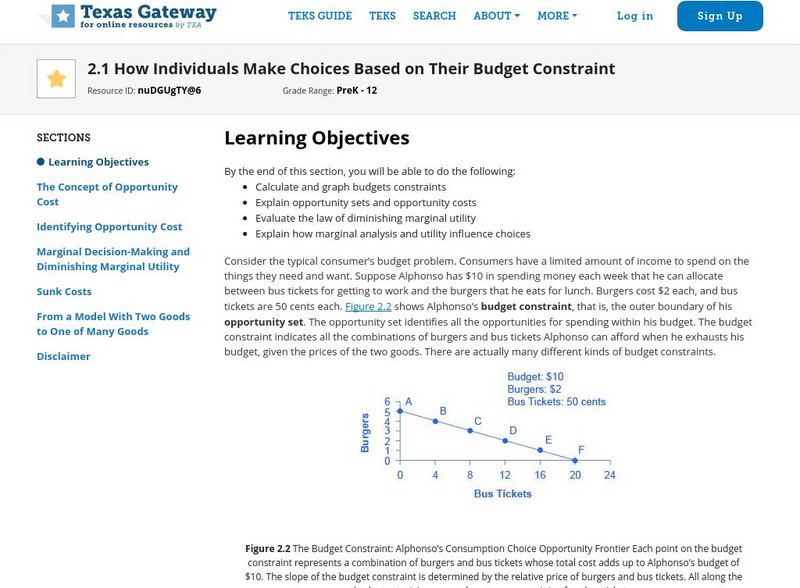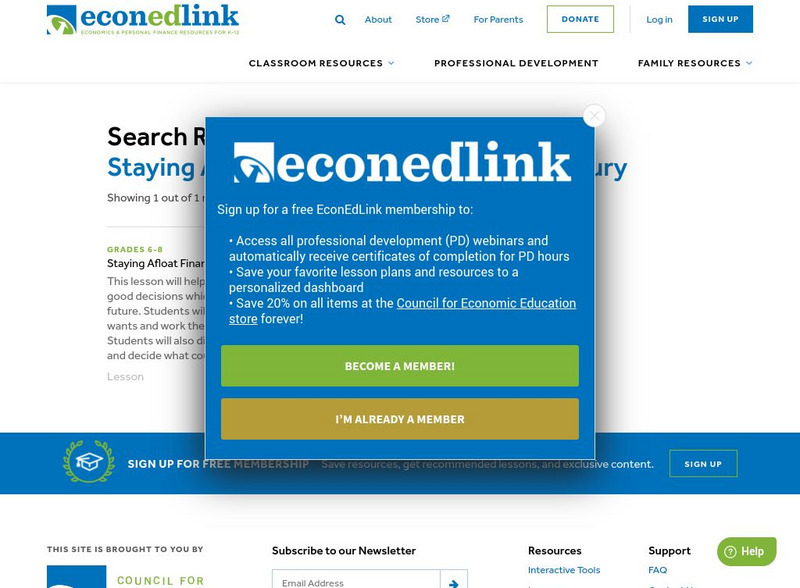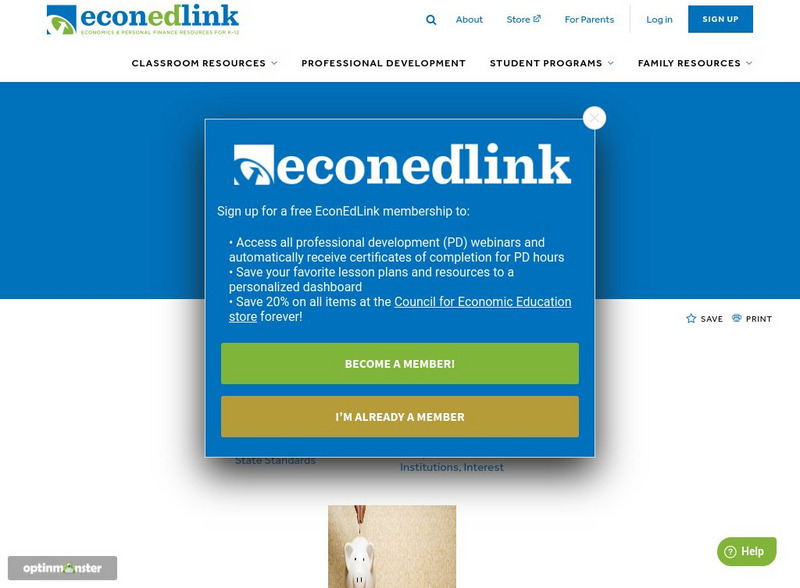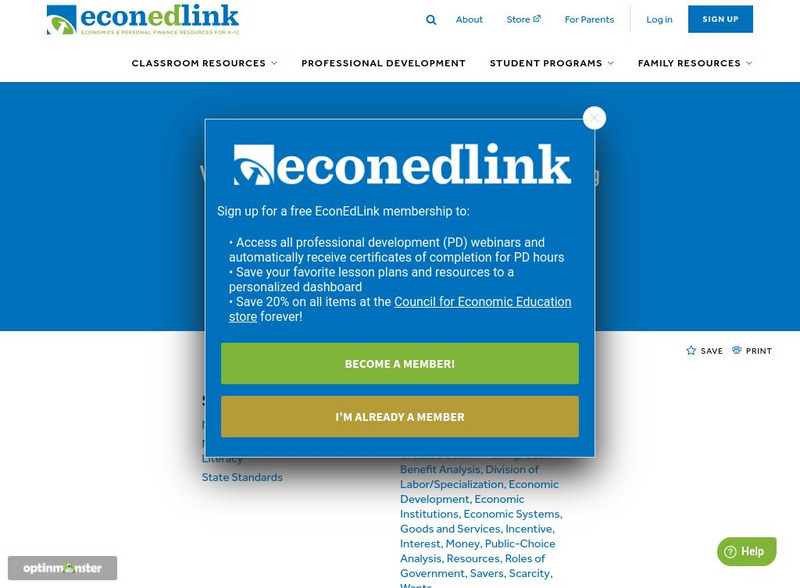Hi, what do you want to do?
Curated OER
Building a Peace
Students take a closer look at the rebuilding of Rwanda. In this current events instructional activity, students review the genocide in the country during the 1990's and perform role plays that require them to determine how to rebuild a...
Curated OER
Play For Pay
Students practice various skills with manipulatives, such as counting correct money amounts to pay for manipulatives.
Council for Economic Education
Econ Ed Link: Opportunity Cost
Consumers are faced with tough choices because so many innovative and exciting products and services are available. Therefore, engraining a decision-making process that includes considering of opportunity cost is necessary to shape...
Texas Education Agency
Texas Gateway: How Individuals Make Choices Based on Their Budget
By the end of this section, you will be able to calculate and graph budgets constraints, explain opportunity sets and opportunity costs, evaluate the law of diminishing marginal utility, and explain how marginal analysis and utility...
Khan Academy
Khan Academy: Decisions Within a Budget Constraint
Another approach to maximizing utility uses indifference curves (sometimes called utility curves) and budget constraints to identify the utility optimizing combination of consumption. Read about this method in this article.
Federal Reserve Bank
Federal Reserve Bank of St. Louis: The Pickle Patch Bathtub [Pdf]
A lesson based on The Pickle Patch Bathtub by Frances Kennedy, where students learn about making choices in how to spend money, and how to set goals and develop a savings plan.
Council for Economic Education
Econ Ed Link: Staying Afloat Financially in the 21st Century
This activity will help students identify how to make good decisions which will help them financially in the future. Students will identify how to take their own wants and work them into a form of a personal budget. Students will also...
Council for Economic Education
Econ Ed Link: A Penny Saved Is a Penny at 4.7% Earned
There are lots of ways to receive income, and lots of ways to spend it. In this EconomicsMinute you will develop two budgets to help you decide how to allocate your income. Assuming you do not love making dollar bill rings.
Council for Economic Education
Econ Ed Link: Break a Leg
In this lesson, young scholars will learn about the basic components and terminology of individual health insurance. Students will make decisions about the value of insurance protection and you will identify trends in the cost of medical...
Council for Economic Education
Econ Ed Link: Big Banks, Piggy Banks
Use this informative economics lesson plan. Find out how to save your money. "You will read about safe places for keeping money; you also will learn about places where money can earn money."
Council for Economic Education
Econ Ed Link: A Penny Saved Is a Penny at 4.7% Earned
This is a instructional activity from EconEdLink where students learn about saving money. Includes activities and materials.
Council for Economic Education
Econ Ed Link: Mobile Phones Matter
A lesson exploring whether or not mobile phones matter when it comes to financial management and financial decision-making.
Council for Economic Education
Econ Ed Link: Work, Earnings and Economics: Using Lyddie by Katherine Paterson
In reading and discussing Lyddie, by Katherine Paterson, students examine basic economic concepts and explore the growth of labor unions and the role of government in a market economy.
Council for Economic Education
Econ Ed Link: Mystery Workers: Productive Resources
This website focuses on productive resources which are divided into three categories, natural, human, and capital.













